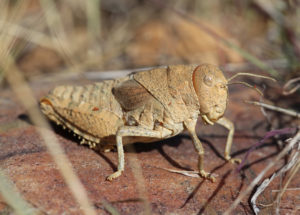
Urgent action is needed to stave off worldwide insect extinction say scientists in twin papers published in the journal Biological Conservation.

The papers, by a team of international scientists warn of accelerating extinctions in many parts of the world and suggest ways to recognise and avert its consequences.
"Engaging civil society and policy makers is essential for the future and mutual wellbeing both of people and insects,'' says Emeritus Professor Nigel Stork from the School of Environment and Science.
"In addition to mitigating climate change, an important aspect of the solution involves setting aside high-quality and manageable portions of land for conservation and transforming global agricultural practices to promote species co-existence."
"It is surprising how little we know about biodiversity at a global level, when only about 10 to 20 per cent of insect and other invertebrate species have been described and named," says Pedro Cardoso, from the Finnish Museum of Natural History, University of Helsinki, Finland.
"And of those with a name, we know little more than a brief morphological description, maybe a part of the genetic code and a single site where it was seen some time ago,
"With species loss, we lose not only another piece of the complex puzzle that is our living world, but also biomass, essential for example to feed other animals in the living chain, unique genes and substances that might one day contribute to cure diseases, and ecosystem functions on which humanity depends,"
The researchers also suggest possible practical solutions based on existing evidence gathered from around the world, to mitigate further insect population loss and species extinctions.
"For Australia these include actions such as setting aside high-quality and manageable portions of land for conservation, transforming global agricultural practices to promote species co-existence, and mitigating climate change,'' Professor Stork said.
Biological Conservation is a leading international journal in the discipline of conservation science. The journal publishes articles spanning a diverse range of fields that contribute to the biological, sociological, ethical and economic dimensions of conservation.
Scientists' warning to humanity on insect extinctions and Solutions for humanity on how to conserve insects are published in the journal Biological Conservation.
Ideas to help insects
- Avoid mowing your garden frequently; let nature grow and feed insects.
- Plant native plants; many insects need only these to survive.
- Avoid pesticides; go organic, at least for your own backyard.
- Leave old trees, stumps and dead leaves alone; they are home to countless species.
- Build an insect hotel with small horizontal holes that can become their nests.
- Reduce your carbon footprint; this affects insects as much as other organisms.
- Support and volunteer in conservation organisations.
- Do not import or release living animals or plants into the wild that could harm native species.
- Be more aware of tiny creatures; always look on the small side of life.






